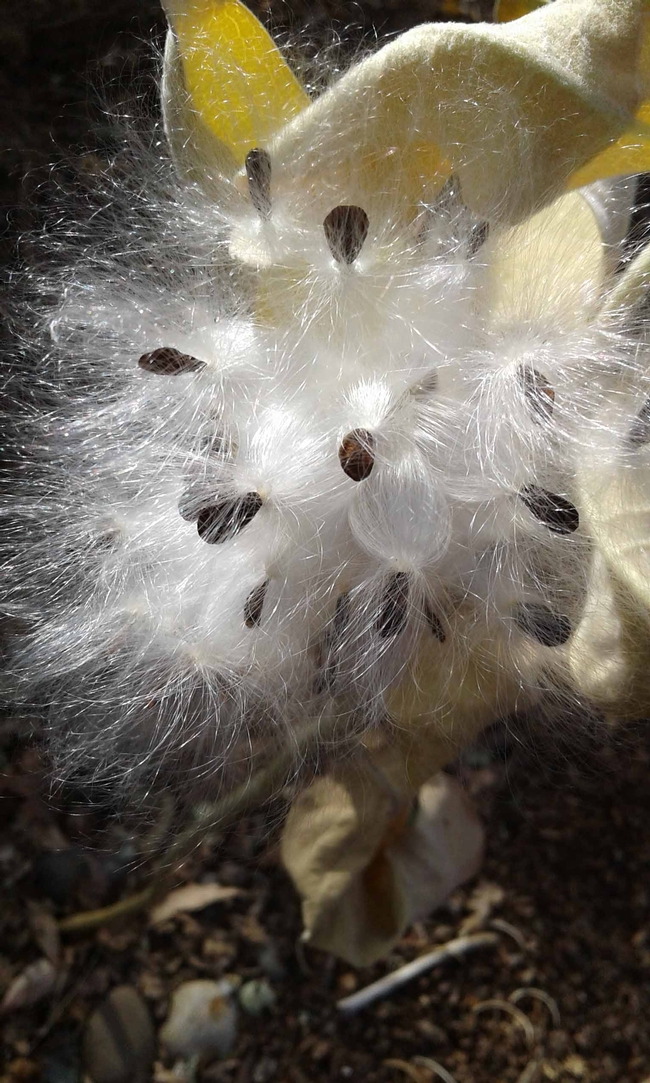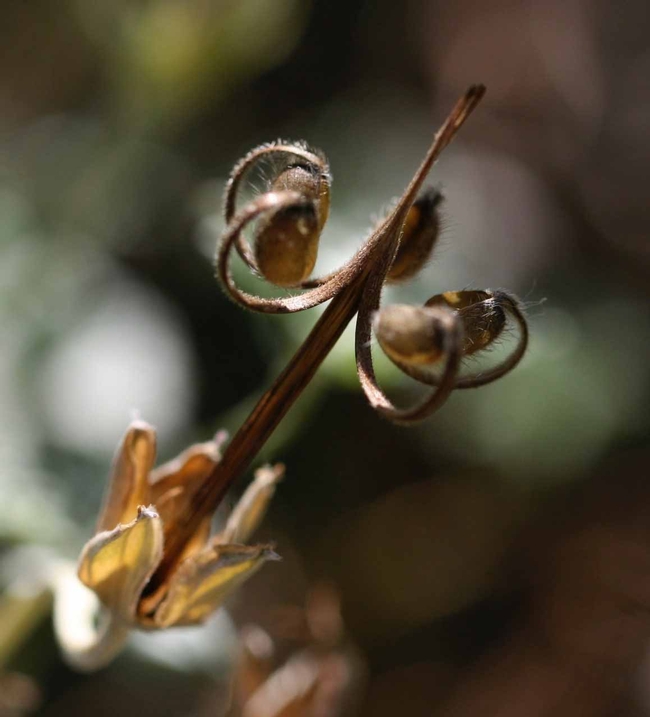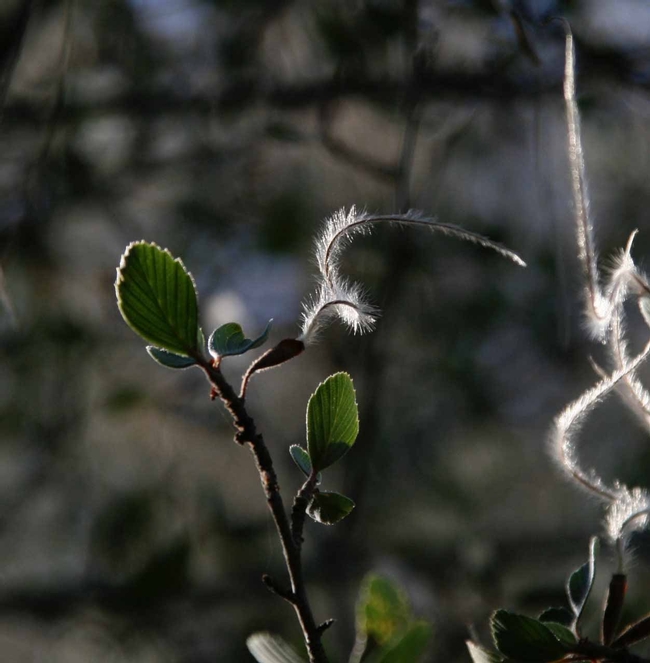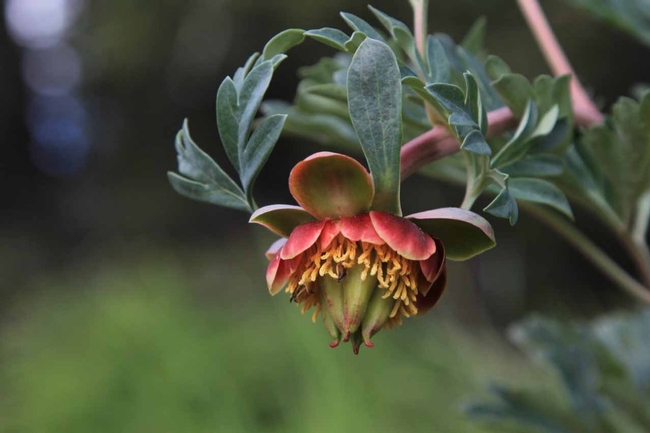By Laura Lukes, UC Master Gardener of Butte County, December 8, 2017.

Jennifer Jewell and John Whittlesey are the creators and curators of Seeds: Nature's Artful Engineering, a traveling exhibit of photographs, interpretive information, and hands-on activities. The exhibit aims to educate the public about California's fascinating native plants and their seeds, on the premise that the more we know and love a natural resource, the more we will appreciate, care for, and protect it.
Jewell recently presented a PowerPoint adaptation of the exhibit as part of the Butte County Master Gardeners 2017 Fall Public Education Series. The following is a summary of her presentation. For more information about the traveling exhibit, please click here.
Seed-bearing plants (spermatophytes) evolved 400 million years ago, coinciding with the receding water and increasing land masses on Earth. The vast variety of seed structures that evolved revolutionized the ability of the plant kingdom to travel to almost every corner of our globe. Diversity is key to the successful reproduction and survival of many species, and seeds have that in spades: that's why our globe is covered in plants.

Basically, seeds consist of an embryo and an endosperm, both of which are often contained within a protective coating called the testa. The endosperm feeds the embryo until it is successfully sent out into the world by one (or more) dispersal methods. If the seed ends up in a welcoming location, and conditions are good, germination can occur. When it does, the seed becomes a seedling, sending roots down into the earth and cotyledons up into the air. In a nutshell, that's the job of a seed: protect, nurture, disperse.
The wonder and beauty of seeds is legion – but part of the wonder lies in the variety of dispersal methods plants have evolved to ensure reproductive success. There is no form, color, texture, size, or scent left unexploited in the bag of reproductive tricks developed by spermatocytes. The five basic dispersal strategies are Wind, Water, Weight, Wildlife, and Ballistics. Every plant utilizes at least one of these methods, and most employ several. The fact that each technique has advantages and disadvantages is a prime example of the tradeoffs and compromises inherent in evolution.
Wind (Anemechory): Reliance on wind is a common method (think pine trees, rice, and other grasses), but not the most efficient. This is why plants with seeds designed to be whisked away on the wind produce enormous amounts of light, aerodynamic seeds. When you depend on the vagary of air currents, you can't be choosy about where you land, and producing lots of seeds dramatically increases survival odds. The structure of the seed itself creates specific movements in the air. The samara produced by the California bigleaf maple (Acer macrophyllum) is a good example: it locomotes like a helicopter until it drops to the ground.

Water (Hydrochory): Seeds designed to take advantage of moving water capitalize on the largest single ecosystem on our globe. As Jewell says, these plants have solved the age-old dilemma of how close to live to Mama, and the answer is “not very”! The leaves of the Indian rhubarb (Darmera peltate), a riparian plant common along our foothill streams, funnel its seeds into the water flowing beneath the plant. Taking hold in the soil away from the parent, they benefit from reduced competition for resources. Conversely, seeds dispersed in this way can forfeit the advantage of existing pollinator attractors.
Weight (Barochory): Gravity-fed dispersal is the domain of conifers and trees bearing large nuts, as well as sycamores. The sheer weight of the mature seed triggers its fall to the earth. These large seeds do not easily travel under their own resources, and either sprout under the parent, or rely on animals to move them about.
Wildlife (Zoochory): A variety of strategies encourages animals to disperse seeds. Through an ingenious crafting of texture, shape, and color, the plant attracts wildlife in order to hitch a ride (epizoochory) and be dropped or scraped off later, or to be consumed by an animal (endozoochory) and then deposited along with the animal's feces in a different location. Although poisonous to humans, the seeds of poison oak (Toxicodendron diversilobum) are an important food source to overwintering wildlife and the birds which migrate along the Pacific Flyway, ensuring a wide dispersal range.
Ballistics (Ballozoochory): In what is perhaps the most impressive seed-dispersal tactic, explosions forcibly propel the seed away from the parent. Triggered by a change in heat or humidity, some part of the seeds' casing will contract and expand and change shape, ejecting seeds in the process. The beloved California poppy (Eschscholzia californica) is a prime example of seeds that burst open. This summer, save some poppy seeds in a paper bag, and listen to them as they dehisce (burst open).

Jewell notes that fall is a great time to view seeds in all their wonder and glory. Their structures are visible, as many are preparing to, or have already, dispersed their embryos to start new life. We urge you to go outside on a seed hunting hike, and find a front row seat to the greatest show on earth.
Note: Jennifer Jewell is an avid gardener and writer. Her garden writing has appeared in House & Garden, Gardens Illustrated and Pacific Horticulture among other publications. She currently serves as the Vice President of the Board of the Pacific Horticulture Society. A weekly voice of gardening on North State Public Radio in Chico, CA since 2008, she is the creator and host of the newly syndicated national radio program: "Cultivating Place: conversations on natural history and the human impulse to garden". John Whittlesey is owner of Canyon Creek Nursery & Design in interior Northern California and a garden designer, plantsman, landscape contractor, and photographer. He is author of The Plant Lover's Guide to Salvias published by Timber Press in 2014.